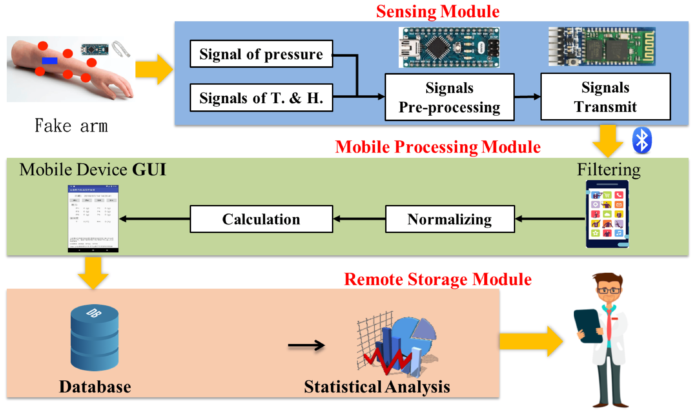In the rapidly evolving digital landscape, web applications have become a cornerstone for businesses looking to offer dynamic, interactive, and user-friendly experiences to their customers. The process of developing a web application is multifaceted, involving several stages that ensure the end product is both functional and secure. Collaborating with a leading mobile application development company in UAE can significantly streamline this process, ensuring that your web app meets high standards of performance and usability. In this article, we’ll explore the Web App Development Process, breaking it down into its key phases to provide a comprehensive guide for businesses and developers alike.
Understanding the Web App Development Process
The Web App Development Process is a systematic approach to creating web applications that are accessible via web browsers. Unlike traditional websites, web apps are designed to perform specific functions, often resembling desktop applications but with the advantage of being accessible from any device with an internet connection. Below is a detailed overview of the key stages involved in developing a successful web application.
1. Requirement Analysis and Planning
The first step in the Web App Development Process is requirement analysis and planning. This phase involves gathering detailed information about the project, understanding the target audience, and defining the app’s purpose and functionality. Stakeholders, including business owners, project managers, and developers, collaborate to outline the project scope, features, and technical requirements.
During this phase, it’s crucial to identify the problem the web app will solve and how it will benefit users. A leading mobile application development company in UAE will typically conduct market research to understand competitors and user expectations. The outcome is a comprehensive project plan that includes timelines, resources, and a roadmap for development.
2. Designing the User Interface and User Experience (UI/UX)
Once the requirements are clear, the next step is to design the user interface (UI) and user experience (UX). The UI/UX design phase focuses on creating a visually appealing and intuitive interface that ensures a seamless experience for users. This involves designing wireframes, mockups, and prototypes that provide a blueprint of the app’s layout, navigation, and overall look and feel.
The UI/UX design process is iterative, with designers creating multiple versions of the interface based on feedback from stakeholders and potential users. The goal is to ensure that the web app is user-friendly, accessible, and aligned with the brand’s identity. A well-designed UI/UX can significantly impact the app’s success by enhancing user satisfaction and engagement.
3. Front-End Development
Front-end development is where the design comes to life. This phase involves coding the user interface using technologies like HTML, CSS, and JavaScript. Front-end developers ensure that the web app is responsive, meaning it adapts to different screen sizes and devices, providing a consistent experience across desktops, tablets, and smartphones.
During front-end development, special attention is given to performance optimization, ensuring that the web app loads quickly and efficiently. The development team also integrates interactive elements, such as forms, buttons, and animations, to enhance user interaction. The goal is to create a front-end that is not only visually appealing but also fast, responsive, and functional.
4. Back-End Development
While the front-end is what users interact with, the back-end is the engine that powers the web app. Back-end development involves setting up servers, databases, and APIs (Application Programming Interfaces) that handle data processing, storage, and communication between the front-end and the server.
Back-end developers work on creating a robust infrastructure that ensures the web app can handle multiple requests, process data efficiently, and remain secure. They use programming languages such as Python, Ruby, PHP, or Node.js, depending on the project requirements. Security is a critical aspect of back-end development, with measures such as data encryption, authentication, and authorization implemented to protect user data and prevent breaches.
5. Integration and Testing
Once the front-end and back-end are developed, the next step is integration and testing. Integration involves connecting the front-end and back-end, ensuring that they work together seamlessly. This includes integrating third-party services, such as payment gateways, social media platforms, or analytics tools.
Testing is a crucial phase of the Web App Development Process, as it ensures that the app functions as expected and meets quality standards. Various types of testing are conducted, including:
- Functional Testing: Ensures that all features and functionalities work correctly.
- Performance Testing: Assesses the app’s speed, responsiveness, and scalability under different conditions.
- Security Testing: Identifies and addresses vulnerabilities to protect the app from potential threats.
- Usability Testing: Evaluates the app’s ease of use and user experience.
Testing is iterative, with developers addressing any issues identified during the process and refining the app to meet the desired standards.
6. Deployment
After successful testing, the web app is ready for deployment. Deployment involves setting up the app in a production environment, making it accessible to users via the web. This phase also includes configuring servers, setting up databases, and ensuring that the app is optimized for performance and security.
A leading mobile application development company in UAE will provide support during deployment, ensuring that the process is smooth and that any potential issues are addressed promptly. The deployment phase also involves monitoring the app to ensure it performs well under real-world conditions.
7. Maintenance and Updates
The Web App Development Process doesn’t end with deployment. Ongoing maintenance and updates are essential to keep the app running smoothly and to adapt to changing user needs and technological advancements. Maintenance involves fixing bugs, improving performance, and ensuring compatibility with new devices or web standards.
Regular updates may also include adding new features, enhancing security measures, or redesigning parts of the app based on user feedback. Continuous monitoring is crucial to identify any issues early and address them before they impact the user experience.
Conclusion
The Web App Development Process is a comprehensive journey that involves meticulous planning, design, development, testing, and ongoing maintenance. By partnering with a leading mobile application development company in UAE, businesses can ensure that their web app meets high standards of quality, performance, and security. A well-executed web app can significantly enhance user engagement, streamline business operations, and provide a competitive edge in the digital marketplace.
As technology continues to evolve, the demand for innovative web applications will only grow. By understanding and following the web app development process, businesses can create powerful, user-friendly, and scalable web apps that meet the needs of their customers and drive business success.

















